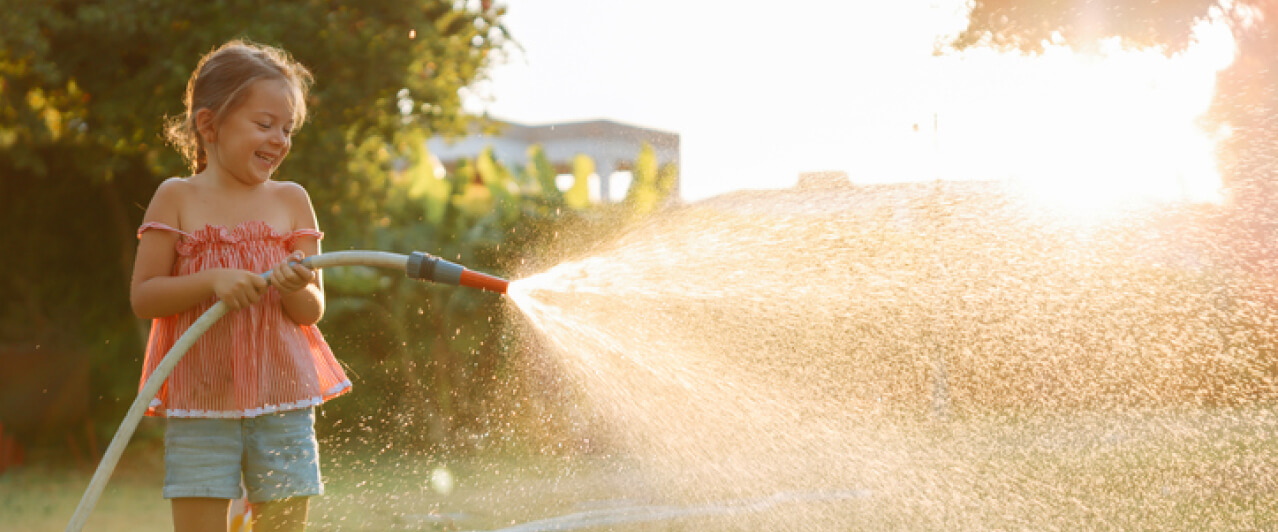All Frequently Asked Questions
How can I save water in my school?

As an education professional, you have a unique opportunity to promote water conservation in your community. You and every other person in your school are a resource—a potential ambassador for conservation. Here are a few suggestions for your school.
- Teachers: Because they interact directly with students, teachers can be effective cheerleaders for conservation. They can seek out water conservation-related projects and activities to keep students aware of conservation and help make it fun. They can also watch for students wasting water—by letting water fountains run or splashing water, for example—and correct the behavior.
- Maintenance Staff: Maintenance employees know the school’s infrastructure and are in the best position to spot problems. In addition to responding to complaints about water leaks, they can also proactively search for water waste. This is particularly important in the case of “invisible” leaks, such as those in irrigation systems.
- Students: Students, by virtue of their number, are the “worker bees” of school conservation. They should be encouraged to promptly report leaks and other instances of water waste, and to share what they learn about conservation with their families to help spread the conservation message throughout the community.
- Water Service Providers: Cal Water and other water service providers have programs and materials available to assist schools with conserving water and educating students about water conservation. Contact your local water service provider for more information on what programs and materials are available in your area.
How do I apply for a conservation rebate?
Go to the Conservation Programs and Rebates Portal and click “Sign Up Now” to see what programs and rebates are available to you in your area.
Do I have to have an online account to get rebates?
An online account is not required to take advantage of our rebates. Many of our conservation programs and rebates do have an online application process for faster processing.
If you do not have access to a computer, you may contact your local Cal Water office for assistance applying for our conservation programs and rebates.
Do I have to install plants for the lawn-to-garden rebate?
Yes, in order to qualify for our lawn-to-garden rebate, at minimum, three approved low-water-use plants per 100 square feet of the converted project area must be added to the landscape and must contain low-water-use, climate-appropriate, native, and non-invasive plants. Artificial turf does not qualify.
For a searchable list of approved plants in your climate zone, you can access the Conservation Programs and Rebates Portal and click the “Eligible Plants” button under the Lawn-to-garden (turf replacement) rebate program.
How do I measure the area of my landscaping?
Measurement
Below are instructions for calculating the footage of simple landscaping. For more complex landscaping, it may be necessary for you to request assistance from your contractor or landscaper. (There are also online satellite imagery websites that may be able to help you measure your lawn’s square footage.)
Measuring the square footage of your landscaping
To measure your landscape area, you will need:
- A Measuring tape or measuring wheel
- Graph paper (free templates available online)
With those materials in hand, follow these steps to find the square footage of your lawn:
1. On the graph paper, make a drawing of your home and the borders of your yard. Write in any descriptions of nearby items such as driveways, fences, or sidewalks.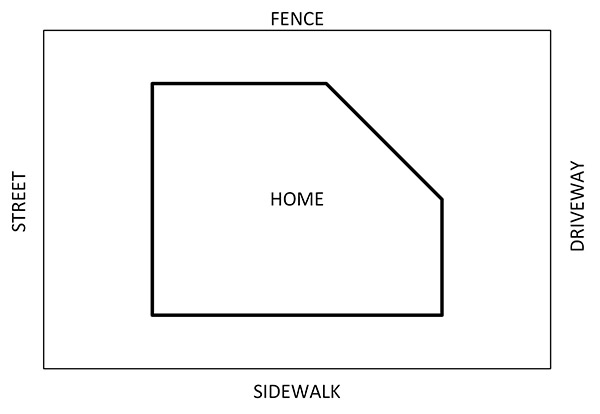
2. Divide the landscape area into easily measured shapes such as rectangles, squares, and triangles.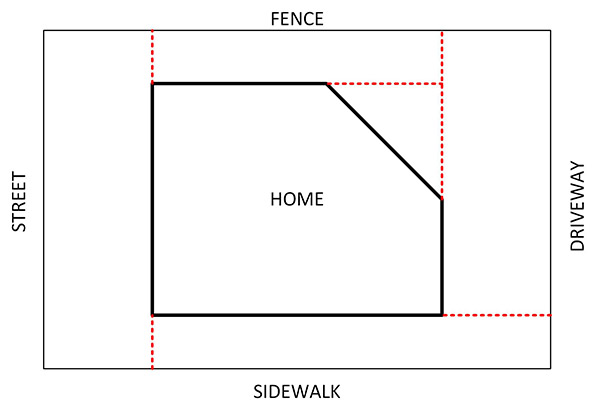
3. Take measurements as needed to calculate the square footage of each shape in your yard (helpful formulas are listed below). Add up the square footage of each shape for total square footage. If a shape with no landscaping (such as a pool) is inside a larger shape (such as a square of lawn), calculate the square footage of the larger shape and subtract the square footage of the smaller shape.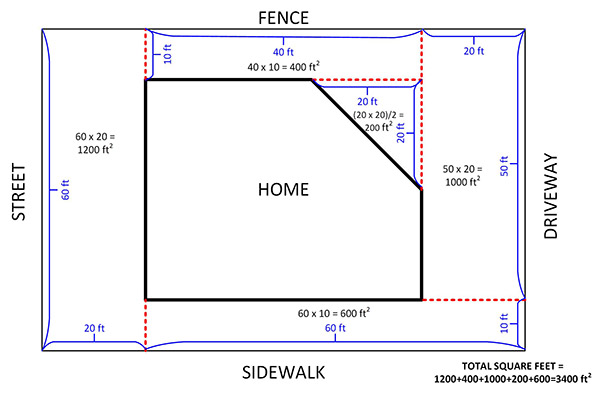
Helpful formulas to find square footage
You can easily calculate the area of common shapes yourself. If you prefer, there are many online “area calculator tools” that will calculate the square footage of common shapes after you enter in the required measurements (for example, this tool on the Math is Fun web site.)
Squares, rectangles, and triangles are the most common shapes in most yards. The formulas for finding their square footage are below. If you have more unusual shapes, you can find out how to calculate their square footage on many websites such as Math is Fun.
Square or Rectangle
Height multiplied by Width = Square Footage
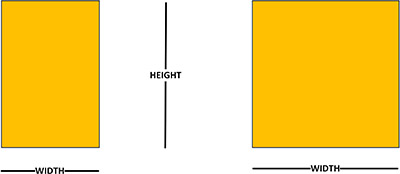
Triangle
Height multiplied by Width and divided by 2 = Square Footage
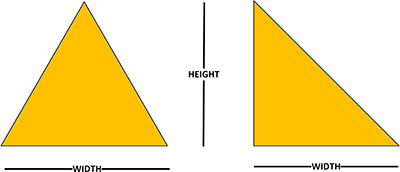
Photo guidelines
Photos submitted as part of a request to change your landscape classification should:
- Be in color.
- Not be up-close shots of grass or plants. We recommend you stand back far enough to include your home, street, or fence as a reference point.
- Represent the landscape area footage. You may need to submit multiple photos to adequately represent your landscaping.
- Be in JPEG or PNG format. (Videos are not accepted.)
What are low-water and drought-resistant plants?
Plants that are adapted to long, dry summers and short, rainy winters are called “Mediterranean-zone” plants. These include plants that are native to California, as well as those that originated in southern Europe, South America, and other “Mediterranean” climates. These plants don’t need much water in the summer and have thrived in water-scarce conditions for thousands of years.
For a searchable list of approved plants in your climate zone, you can access the Conservation Programs and Rebates Portal and click the “Eligible Plants” button under the Lawn-to-garden (turf replacement) rebate program.
Where can I find out more about conservation?
We offer a variety of conservation rebates, tips, and resources to help customers save water every day. You can find out more on our Conservation page.
What are the stages of drought?
To help maintain safe, clean, and reliable water service to our residential and business customers in all climates and seasons, Cal Water follows a set of drought severity stages to determine the level of water conservation and assess potential water-use restrictions.
The 6 stages of Drought:
Stage 1
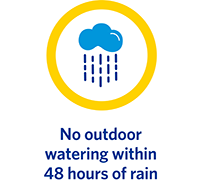
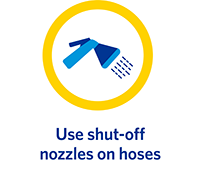
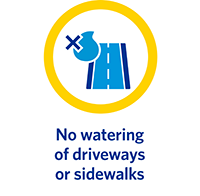
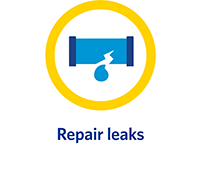
When Stage 1 drought conditions are declared:
- We implement policies and guidelines for reducing water usage by 10 percent.
- Residential and business customers are subject to water-use restrictions
- Outdoor irrigation is subject to limited times
- Leak repairs must be made in a timely manner
- Shut-off nozzles are required when using a hose to wash a car
- Outdoor watering is prohibited within 48 hours of rain
Stage 1 violators are subject to:
- Installation of water measurement devices
- Fines of up to $50 for subsequent violations
- Possible installation of a flow-restricting device for egregious violators
Stage 2
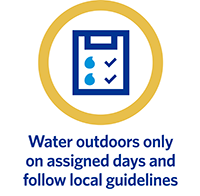
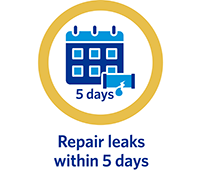
When Stage 2 drought conditions are declared:
- We implement policies and guidelines for reducing water usage by 20 percent
- Residential and business customers are subject to additional water-use restrictions
- Outdoor irrigation by residential and business customers is limited further to 1-3 days per week, depending on local ordinance
- Use of non-recirculating systems in all new conveyer car wash and commercial laundry systems are prohibited
- Use of single pass cooling systems in new connections is prohibited
Stage 2 violators are subject to:
- Installation of water measurement devices
- Fines of up to $100 for subsequent violations
- Possible installation of a flow-restricting device for egregious violators
Stage 3
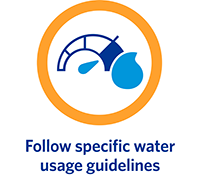
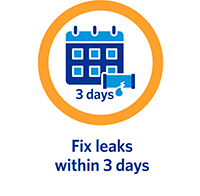
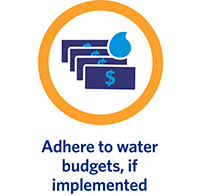
When Stage 3 drought conditions are declared:
- We implement policies and guidelines for reducing water usage by 30 percent
- Residential and business customers are subject to additional water-use restrictions
- Water usage for construction and dust control is prohibited
- Irrigation of ornamental turf on public street medians is prohibited
- Filling ornamental lakes or ponds is prohibited
Stage 3 violators are subject to:
- Installation of water measurement devices
- Fines of up to $200 for subsequent violations
- Possible installation of a flow-restricting device for egregious violators
Stage 4
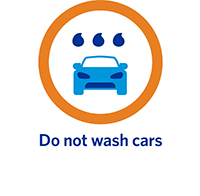

When Stage 4 drought conditions are declared:
- We implement policies and guidelines for reducing water usage by 40 percent
- Residential and business customers are subject to additional water-use restrictions
- Vehicle washing is prohibited, except with recirculated water or low-volume systems
- Use of water for recreational purposes, such as water parks, is prohibited
- Filling swimming pools is prohibited
Stage 4 violators are subject to:
- Installation of water measurement devices
- Fines of up to $400 for subsequent violations
- Possible installation of a flow-restricting device for egregious violators
Stage 5
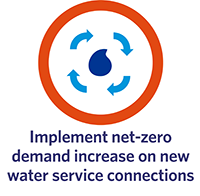
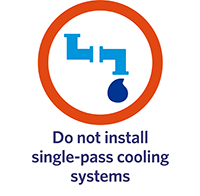
When Stage 5 drought conditions are declared:
- We implement policies and guidelines for reducing water usage by 50 percent
- Residential and business customers are subject to additional water-use restrictions
- Net zero demand increase is required on new water service connections
- Single-pass cooling systems are prohibited
- Swimming pool covers are required
Stage 5 violators are subject to:
- Installation of water measurement devices
- Fines of up to $800 for subsequent violations
- Possible installation of a flow-restricting device for egregious violators
Stage 6
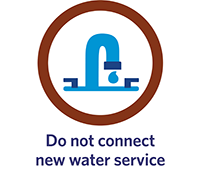
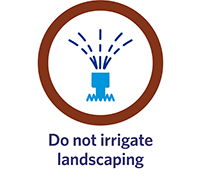
When Stage 6 drought conditions are declared:
- We implement policies and guidelines for reducing water usage by more than 50 percent
- Residential and business customers are subject to additional water-use restrictions
- All landscape irrigation is prohibited
- New water service connections are prohibited
Stage 6 violators are subject to:
- Installation of water measurement devices
- Fines of up to $1,600 for subsequent violations
- Possible installation of a flow-restricting device for egregious violators

Get in Touch
Do you have a comment or a question that isn’t answered elsewhere on this site? Get in touch with us and we’ll happily help you out.
Contact Us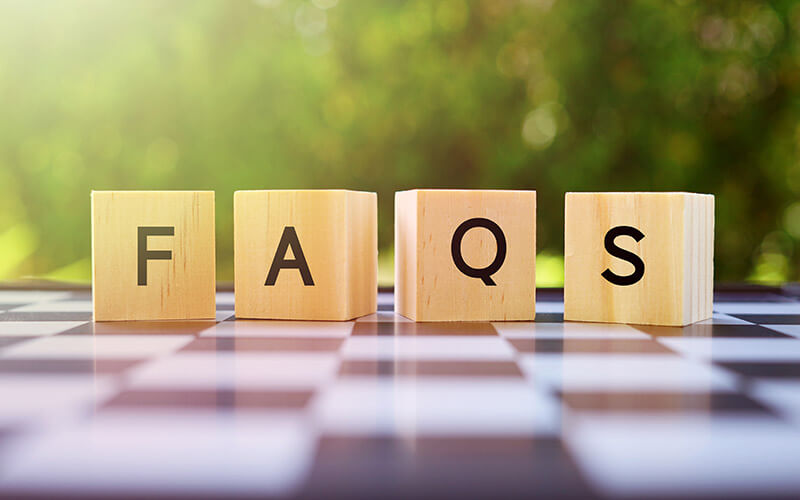
Explore FAQs
Find answers to common questions about billing, water quality, conservation programs, and more in our comprehensive FAQ section.
Frequently Asked Questions
